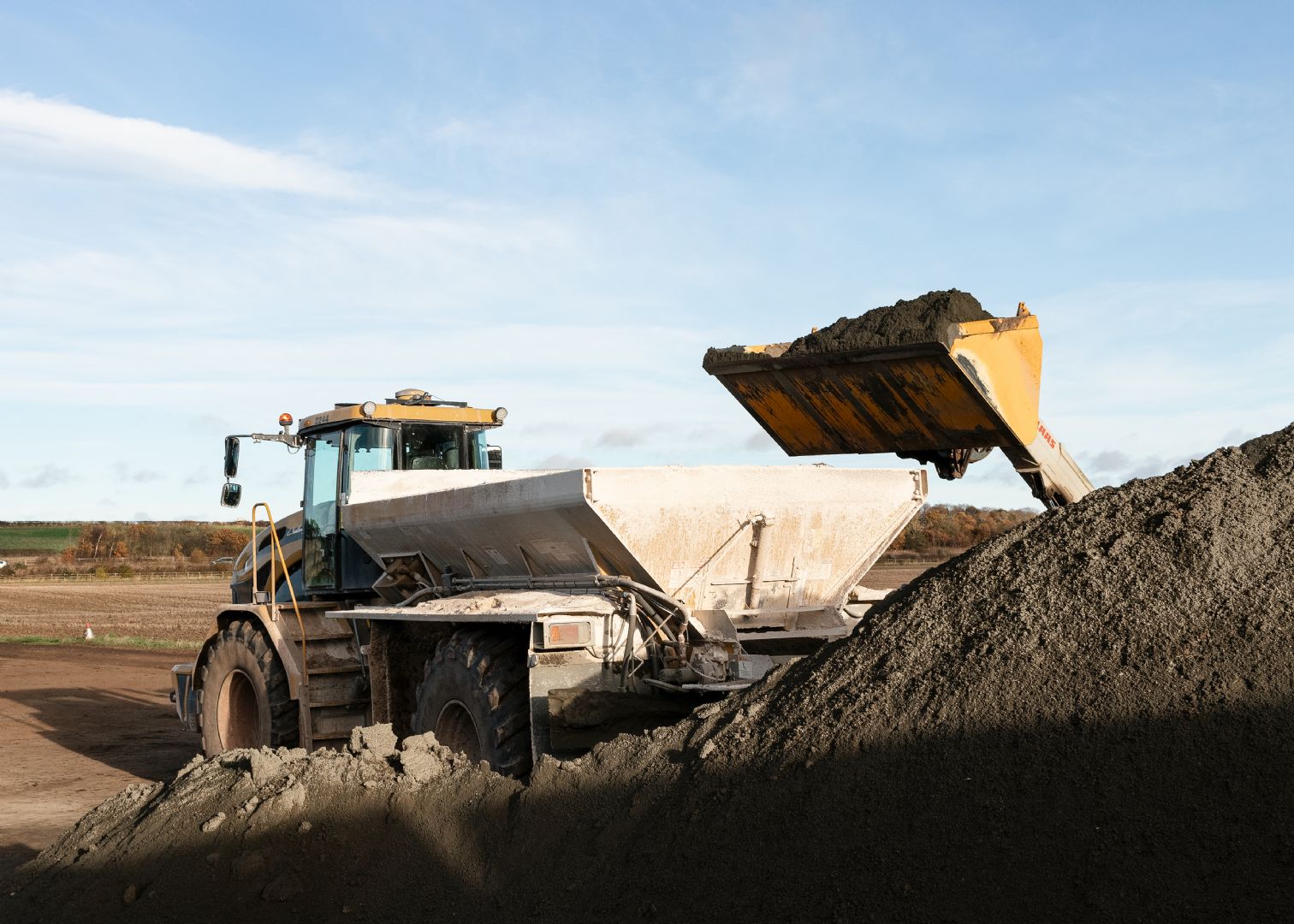
The IfA #farmsmart feature allows us to showcase ways in which agricultural innovation can improve farm profitability and sustainability. Innovation for Agriculture have in no way been sponsored to publish this feature and remain committed to providing independent information to the UK agricultural community.
Understanding enhanced weathering, by Ben Westcott (Head of Enhanced Weathering, un-do)
"Cast your mind back to our geography classes in school and you might remember learning about rock weathering; it’s a naturally occurring process that continuously erodes away rocks whilst storing atmospheric CO2. It is a core part of the global carbon cycle, where CO2 dissolved in rainwater reacts with rocks and is locked away in carbonate form for hundreds of thousands of years.
Natural rock weathering slowly sequesters billions of tonnes of CO2 over hundreds of thousands of years. Enhanced weathering accelerates this process.
At UNDO, we accelerate natural rock weathering by spreading crushed basalt onto the right soils in the right climates, permanently locking away CO2 in support of a net zero future. By using crushed rock, we can accelerate the weathering process and sequester CO2 hundreds of times faster. We focus on basalt because it has a low level of heavy metals, is rich in mineral and trace elements and is safe for agricultural use. Coming back to school geography, we also learned that anywhere in the world which has recent volcanic activity has very fertile soil. Long ago this fertility was spread by the glaciers and it is these benefits that we are tapping into by spreading freshly crushed basalt.
Finely crushed basalt is a by-product of the quarrying industry that we spread onto farmland and forestry using standard agricultural equipment. Once spread, it begins to lock CO2 away immediately, much like a sugar cube dissolving in water.
We find basalt rock all over the world, as it is routinely quarried for construction and road building, amongst other uses. Because the crushed rock is a by-product of an existing industry, we aren’t using additional energy to produce it and have established a robust process for accounting for any carbon footprint from our own operations.
Working with industry along the carbon removal value chain
To asses the safety of all our operations, we conduct extensive testing of our rock to ensure that it is safe for agricultural use. In fact, by spreading basalt dust on agricultural land, we’re adding significant benefits to the soil.
Increased broad-spectrum nutrient availability
During enhanced weathering there is a rise in soil pH. This increases the availability of a broad range of plant nutrients, particularly phosphate, and this slight rise means there will be more nutrients available for plant uptake.
Release of additional plant nutrients
Enhanced weathering also releases a range of valuable plant nutrients from the parent rock material. These nutrients include the major nutrients, calcium and magnesium together with essential micronutrients such as manganese, copper and zinc, finally there are nutrients such as cobalt and selenium which are important for animal health.
These additional nutrients are not all immediately available, but in line with the enhanced weathering process they are slowly released and become available for plant uptake in the weeks and months following application.
Enhanced weathering helps support healthy soils and the communities which rely on them.
Because of the way we transport and spread rock, our operations not only support farmers but also the rural communities of which they are a part. Whilst we must have a broad range of carbon dioxide removal technologies if we are to meet our net zero targets, enhanced weathering has the benefits that it does not require new infrastructure or installations, does not divert land away from food production and does not require significant additional energy. We design our operations for maximum sequestration, which means minimising additional processing and haulage.
A scientific approach to support our business model
We model the rate at which our crushed basalt rock breaks down and reacts with CO2 dissolved in soil waters. We then apply a buffer to that model to ensure that we are conservative in our predictions and conduct intensive monitoring in selected locations to guarantee the accuracy of our predictions. We then generate carbon credits based on the data collected during our operations, which we sell on the voluntary carbon market. Voluntary carbon markets allow carbon emitters, private investors, governments, non-governmental organisations, businesses and individuals alike to offset their unavoidable emissions by purchasing carbon credits.
The combination of permanent carbon removal and co-benefits make enhanced weathering a powerful solution in the fight against climate change.
Our partners value the CO2 we lock away through enhanced weathering for two main reasons. Firstly, because of the positive contribution the process makes to agriculture and rural economies. Secondly, because of the permanence of the process: once the reaction between CO2 and weathered rock takes place, it is very difficult to reverse. CO2 stays locked away for hundreds of thousands of years or, as far as humans are concerned, permanently. The combination of permanence and additional benefits is what makes enhanced weathering such a powerful solution in the fight against climate change."
For more information or to register as a carbon removal partner with un-do then visit their website at www.un-do.com/partnerships
If you have any questions about what you have read in this article then contact joe@un-do.com




